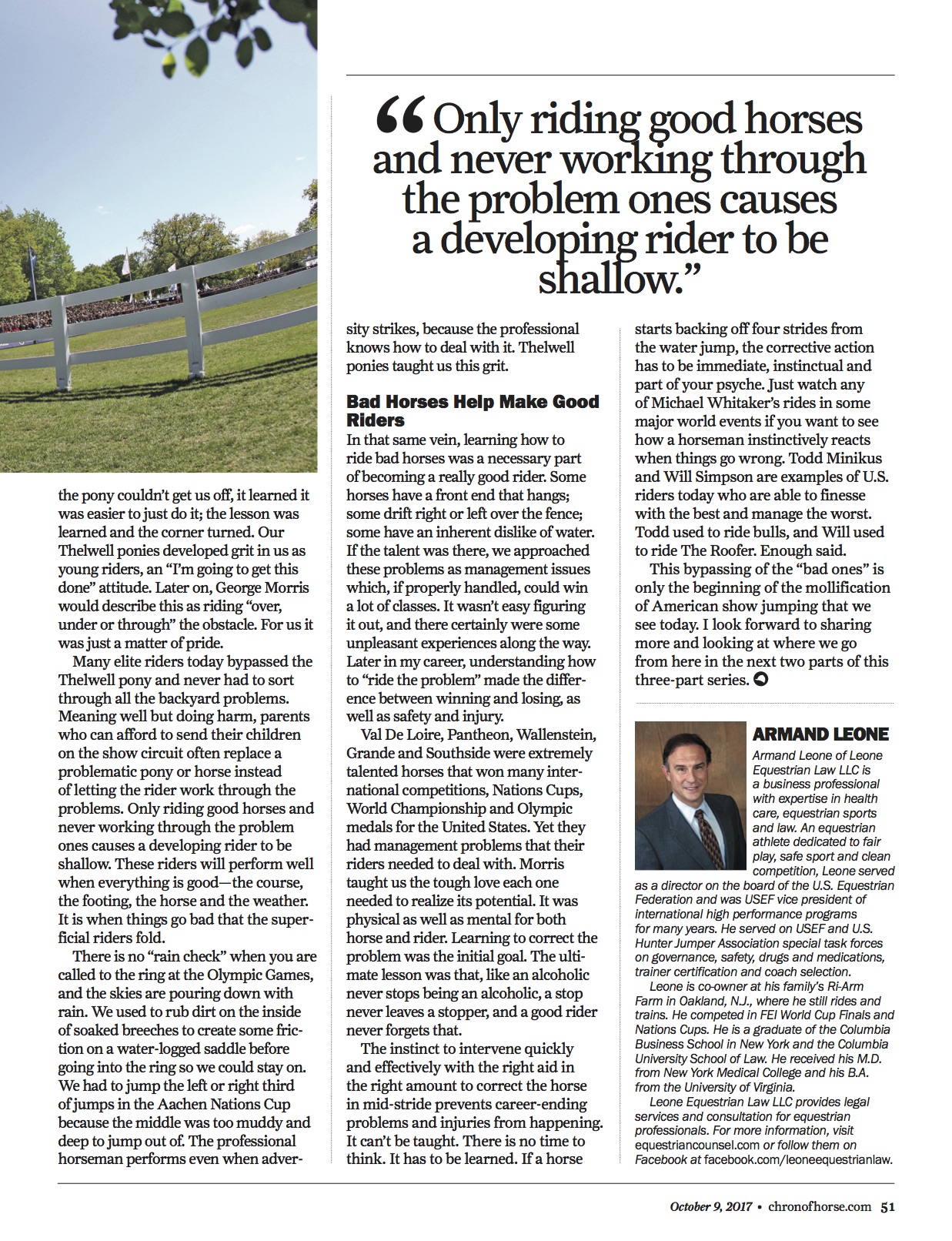Visit Chronicle of the Horse to subscribe and view the article as it originally appeared.
Recently, several prominent trainers and riders have discussed how the discipline of show jumping has changed, and it has.
Prior to 1950, American show jumping, with its standing martingales and rub classes without time allowed, was a vastly different sport than the one practiced in Europe. Then in the 1970s, Jerry Baker and Gene Mische, along with the renowned course designer Pamela Carruthers, brought European style grand prix jumping to the United States, and U.S. show jumping embarked on a meteoric rise. The Cleveland Grand Prix and the Tampa Invitational (Fla.) introduced width, water, walls, combinations and banks to our grand prix riders.

Many barns built simulated natural obstacles at home, and the professionals at that time had to learn how to ride, train and jump them. Double ditches, slides, tables, devil’s dykes and open waters were all routine jumps in our day. Starting in the 1970s, the American Grand Prix Association developed a year-long series of events across the country. The fences were big, the water wide, and the riding was physical.
The American Invitational and the International Jumping Derby in Rhode Island, modeled after the Hickstead and Hamburg Derbies in Europe, tested the scope and courage of riders and horses. Today, I doubt any one of our U.S. grand prix riders could jump a clear round over that course. In fact, how many of our country’s riders have even successfully competed in the Hickstead Derby, the Hamburg Derby or the Helsinki Derby in the last five years? I would venture to guess you could count the answer on your fingers. Only Spruce Meadows (Canada) has maintained the standards of jumping that we used to have in the United States and that we were exposed to by Baker, Mische and Carruthers. There are no slides or bank jumps in our grand prix classes today. Few grand prix events still use the water jump, and I can only think of two venues that have shallow ditch jumps. Our younger riders today don’t have the necessary experience, toughness and knowledge to jump those courses. They may tell you that their horses are too valuable or too good to risk injury in such an event. That is not true. The horses today are no more valuable in relative terms today than ours were then, and their legs were no less susceptible to injury back then. Read more in the full article text below!


